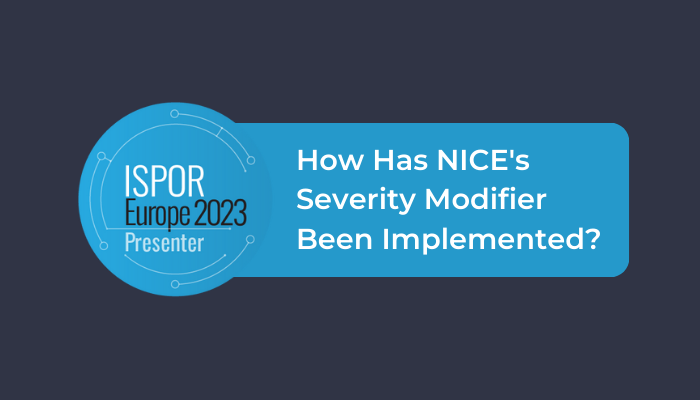OBJECTIVES
In January 2022, the National Institute for Health and Care Excellence (NICE) published its updated manual on the methods and processes for health technology evaluations. This included removing the end-of-life criteria and introducing a severity modifier, among other changes. The severity modifier allows a QALY weight of 1.2 or 1.7 to apply, depending on the QALY shortfall. This study aims to understand how the severity modifier has been implemented so far and its impact on committee decision making.
METHODS
NICE health technology evaluations for which the updated methods applied (with final scopes from February 2022 onwards) were identified from publicly available information. Evaluation documents were analysed to collect data on indication, cost-effectiveness results, recommendations, and mention of the severity modifier. For relevant evaluations, details on the company’s approach to the severity modifier, NICE’s critique of the severity modifier and the impact on the outcome of the appraisal were assessed.
RESULTS
27 relevant evaluations were identified with draft or final guidance published. Of these, the company made the case for the severity modifier applying in 3 (11%). The NICE committee applied a 1.2x weight in TA896, a 1.7x weight in TA866 for people having best supportive care only, and considered scenarios with a 1.2x weight in TA862. However, it could not conclude that the modifier was convincingly met. Issues leading to uncertainty in the QALY shortfall calculations related to utility values, the source of survival data and the baseline age in the model.
CONCLUSION
The severity modifier has been proposed in few evaluations so far, less than the proportion that NICE’s analysis suggested would have applied for evaluations from 2011 to 2019 (~28%). The NICE committee has generally needed convincing evidence to apply the modifier, although recognised the need to accept greater uncertainty in rare diseases in TA896.
Read the full research below.
Plus, read our other research for ISPOR Europe 2023 here.
